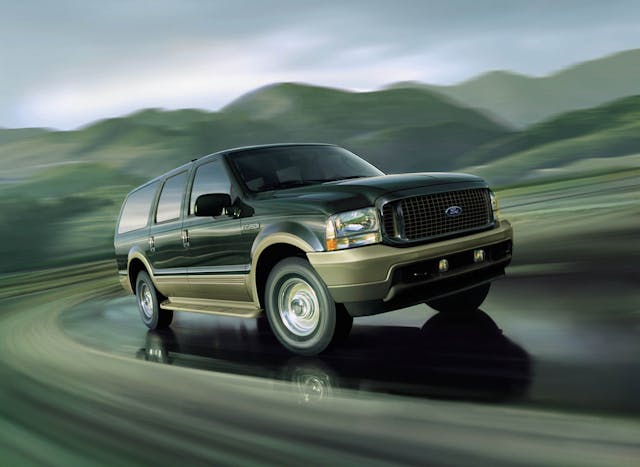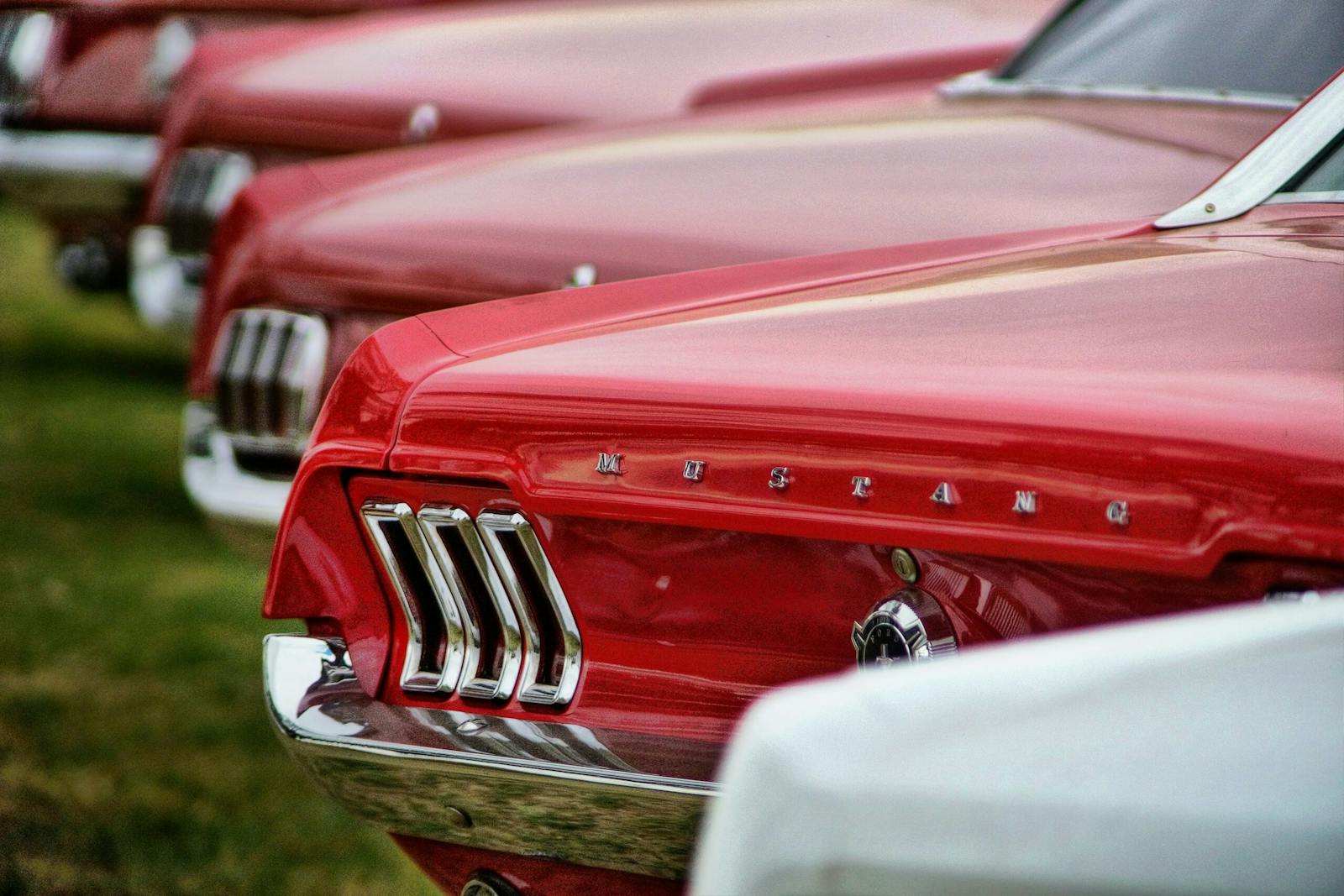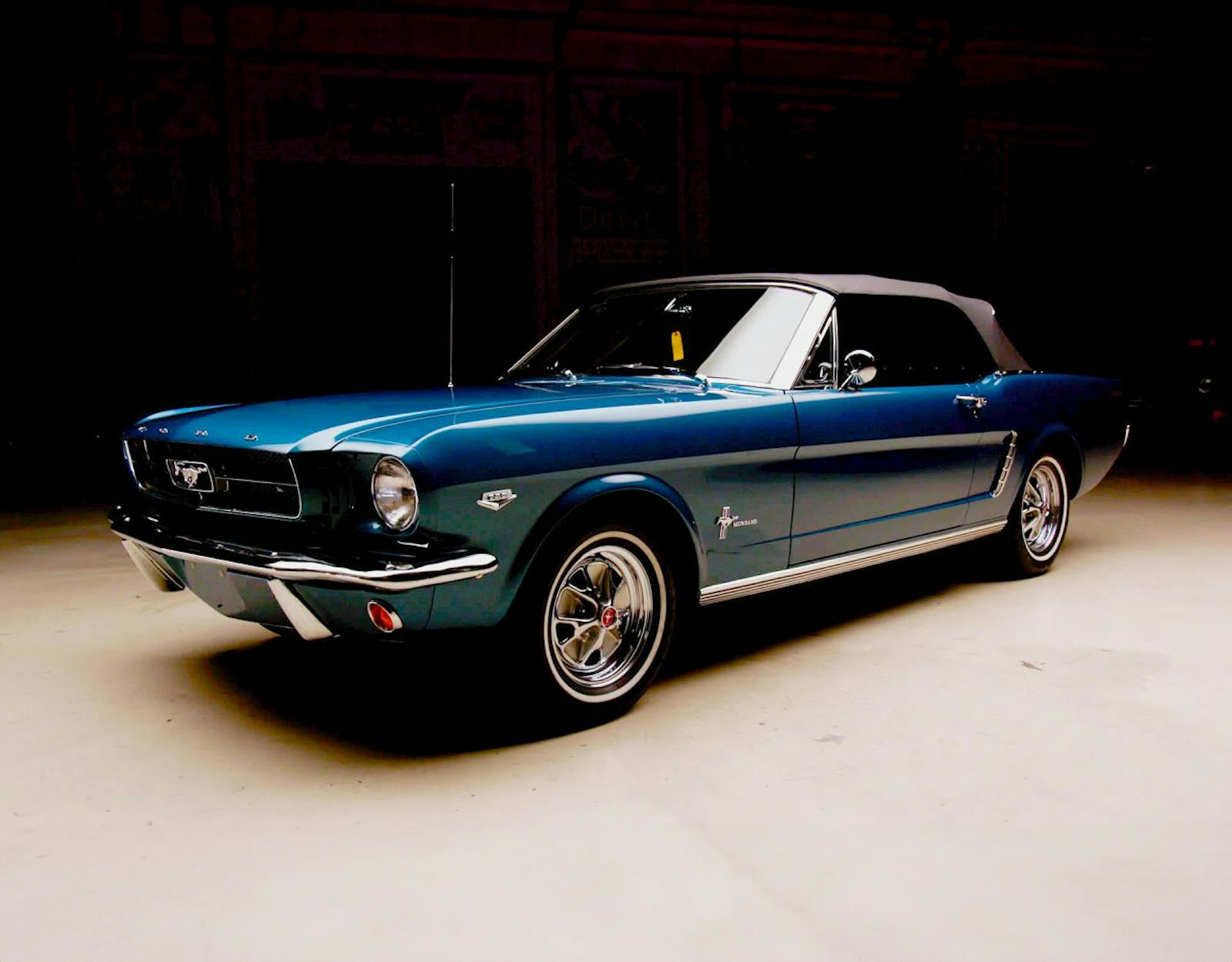Why gas guzzlers make sense (again)
As I write this, the price of regular unleaded is hovering around $5 a gallon. Diesel is about a buck a gallon more. All of this is headline news on a daily basis. Fuel prices are affecting every industry, every business, and every consumer.
Yet as of late, buyers seem to be fighting over some immense, heavy-duty, sub–15-mpg gas-guzzling SUVs. Some are even selling for many multiples of what they did a few years ago, when fuel cost a fraction of what it does now. But the people buying these things (including yours truly) might be on to something.
Here I’ve focused on two gas-guzzlers with ever-increasing cult followings: The 2000–05 Ford Excursion and the 1998–2007 Toyota Land Cruiser.
The longest, heaviest mass-produced SUV ever, the Excursion was essentially an F-250 Super Duty wagon. With the optional V-10 gas or Power Stroke diesel engines, they tow up to 11,000 pounds. Never mind how many people, pets, and suitcases you can stuff inside an Excursion at the same time.

J100-series Land Cruisers, however, are not 3/4-ton pickup-based towing machines. Nor do they offer a variety of drivetrain choices. But they do have Toyota’s silky-smooth 4.7-liter V-8 and full-time 4WD. And they were built to last forever. Literally.
The average combined fuel economy for these trucks is about 14 mpg. But their collective inefficiency hasn’t seemed to slow down values. In the past 36 months, Excursion prices are up an average of 46 percent, while J100s are up 85 percent. More telling is the fact that both of these had heavy Gen X demand until the past 24 months, when millennial (and younger) interest came on strong.

Here’s why I think this is happening. First, they just don’t make stuff like this anymore. There were no hybrid powertrains, no kowtowing to CAFE standards, no considerations beyond just being rugged and unapologetic in their mission. Both are old enough to be “cool,” but not so old that they aren’t usable in today’s world.
Then there’s the COVID factor. These are vehicles that allow people to load up the whole family, tow the Airstream, and head out to places that help you forget about reality for a weekend or four. That’s especially attractive to millennial buyers looking to introduce their young kids to something beyond screen time. The work-from-home phenomenon also plays into this, because you can work from that camping spot.
Additionally, there’s a certain satisfaction to the analog feel of these machines—an unplugged vibe with no LCDs and no lane-keep assist or other electronic nannies constantly dinging at you.
As for that awful fuel mileage, let’s pencil that out. A new $52,000 Chevy Tahoe gets 16 mpg combined. A new $39,000 Grand Cherokee is rated at 23 mpg. Driving 10,000 miles in a year, the difference between a 14-mpg rig and a 23-mpg rig equates to about 279 gallons. At $5 a gallon, that’s an extra $1395 a year. Factor in the significant savings in the purchase price, and the additional fuel cost doesn’t seem insane.

Which is why I recently decided to replace our 2020 Ford Expedition with a “vintage” Excursion. The Expedition is a fine vehicle, but a boat or car trailer of any significance drops its comfy independent rear suspension to its knees, and towing in crosswinds was, um, more exciting than I expected. So I went on an Excursion excursion and landed on a clean, 50,000-mile 2000 Limited with the V-10. I paid $27,000 for it. Since then, I’ve done some needed maintenance and installed new tires. I’m currently in the truck for about $35K. We’ve put 2000 miles on it so far, primarily pulling a trailer to my son’s go-kart races every week, which it does as admirably as hoped. Thanks to the towing, I haven’t broken into double-digit fuel mileage yet, but the tank is big, so the refueling intervals don’t rub my nose in their thirst.
I have to say, I’m pleased with the decision to step back 22 years of refinement and technology for a rig that better fits my needs. Who says whistling past the graveyard isn’t rewarding?

Check out the Hagerty Media homepage so you don’t miss a single story, or better yet, bookmark it.
This article first appeared in Hagerty Drivers Club magazine. Click here to subscribe and join the club.



Please look at any number of historical pictures of islands and bays from the early 1900s compared to now. Best example is Statue of Liberty. No change.
If the green elites are worried why are they buying mansions right on the shore?
They produce less CO emissions than a Tesla!
Not over their useful life, which is the appropriate metric.
I’ve used a ’04 3/4 ton Avalanche with a 8.1L V8 in it for towing for the past 5 years and love it. It has just under 60,000 miles on it. When I first bought it I installed air bags in the back for levelling the load, put in long tube stainless headers, programmer and K&N cold air intake. People who ride with me are amazed at the fuel economy when towing and staying under 65 mph but with no end of power while towing up hills or headwind. I’m usually towing a 26′ enclosed car hauler with a classic car of some kind inside going to and from shows and collector car auctions. Oil changes are under $100, fuel filters $30, injectors $40, air filters $30 etc., try doing that with a Duramax and yet my towing capacity is the same, and oh yeah, did I mention it comes with an Allison transmission?
Still driving my 6 speed manual 1999 F-350 diesel with 230,000 miles on it. She is no longer pretty but when it comes to towing it is an elephant and putting in a few hundred dollars once in a while doesn’t bother me and my insurance cost is minimal.
At this point, my well-maintained GM Squarebody K10 & OBS Dually are paying me to own them; plus being that they’re simple, reliable – and I think more attractive than the newer trucks – I’m perfectly happy avoiding the electronics, complications, and less-wieldy size of the newer stuff.
My ’96 4 liter Ranger isn’t a “guzzler” – and it has 380000km on it now and still going strong here in the south-western Ontario rust belt. At 8000km a year I expect to spend a thousand or two every year on repairs/maintenance but it sure doesn’t make any sense to replace it. If I take it easy I can do 31MPG Imperial on the highway and 26 on short trips in the summer (like the 15km or so back and forth to the local airport). Short winter trips are obviously a different story!!!
A friend used to buy high efficiency high dollar new Hondas and said I was crazy driving V6 Chryslers. I paid about 1/4 what he did for the vehicle and for the mileage I put on the Honda would have taken 50 years to pay for itself. For him, driving back and forth from Kitchener to downtown Toronto every day the honda made sense – but not for me.
My 200 series Land Cruiser gets abysmal gas mileage. Truly horrid. However, like you said, it’s built to last forever. While a little more modern than the 100 series you talk about, it’s still very analog, with buttons for everything and the ability to turn anything on/off that you like or dislike. It easily carries the family, dog and luggage, is superbly comfy on the highway and is great in bad winter weather and off road. I appreciate how little it depreciates as well.
Well done, Colin. I agree. When I get more space I will look for an Excursion.
“The only thing you can’t haul in a Suburban, is another Suburban!”
This applied to gas guzzling sports cars too. We might not worry about the cost if we paid a low price for the car or if we use it very little. Also new vehicles are by nature very complicated so repairs can easily be higher due to all the complication.
About mileage and types of fuel – I just took a 2000 mile ride in my ’94 4runner (a model not known for great mpg though I did have a performance rebuild with balancing – rather smooth with adequate power), the fuel available at the service plazas was usually laced with ethanol. I checked mileage with every fill-up around 16 mpg with the 10% ethanol. It jumped to 19+ with ethanol-free premium and once 21+ (must have been the good stuff).
No doubt the quality of the fuel available suffers at times.
I kept track of every fuel purchase I made since circa 1990 (Date, Amount, Price, and MPG).
When 10% ethanol was introduced, my MPG dropped 10%.
Didn’t see it mentioned in the article, but let’s not forget that vehicles like the 100 series Land Cruisers are likely post-depreciation (or at least any major depreciation). Meaning, they will hold or go up in value, even when you factor in maintenance and repair costs over time. Similar new vehicles may hold value a little bit due to current inflation that’s driving up prices and shortages that limit supply, but they will eventually begin their downward slide in value soon enough.
Second, for those who complain that these vehicles pollute more than newer vehicles, keep in mind that they are already here. They already exist (i.e. no energy or resources is required to make these vehicles again).
Also, they are still viable working machines that someone will continue to drive, whether you or I buy one of these vehicles or we buy something new. So buying a new hybrid or EV won’t take these off the road, but exercising that option will cost more with the prices of new vehicles + their inevitable depreciation.
For my money, I would take a used classic SUV like a Series 100 LC over a more expensive new SUV any day.
Depends. Do you already OWN the large gas hog SUV/truck? If so and it’s in good shape, keep it and drive it. Do you NEED a vehicle that large for towing or work? Is it a DAILY driver? How long is the commute? It all factors in. Anytime you can get by without a payment, you save money even if the gas mileage isn’t good. But, to go out and overpay for what might be an old turd that has the price jacked up would be stupid. Older vehicles can be simpler to work on and keep on the road if the parts are out there.
NAMiata is exactly right! Most people drive to work alone so an Excursion is among the ultimate offenders. If all you do is use it for towing a rig, you can almost justify that, but when you are driving to work solo, you are dumping thousands of pounds of carbon in the air with no regard for others.
My diesel (6.0) gets 20 miles to the gallon at80 mph and if I drop to 70 it will get up to 23 depending on the road and quality of diesel fuel I can get for it, I know people with smaller suv’s that do not do anywhere n=ear that
Yea, Amen, and right on!
If a new 52k Tahoe gets far less fuel economy than a new 39k Cherokee, how does buying the more expensive vehicle make sense?
I bought a 1999 v-10 4wd Superduty in the last gas crisis for $6800 with 63000 miles on it. Now have 235,000. It is the best do all truck I have had. Absolutely no maintenance except consumables. Best ever milage was 15mpg usually get around 12. I also have a 2003 LX 470. Also crazy dependable. do all, family, dog, anything carrier that I know will always get me from point a to point b. Cruises 80 mph plus on hwy 5 all day long. Terrible daily MPG. But for the very reasons of this article it is really tough to go to another vehicle and make sense of it.
I do my own Redline synthetic oil changes every 5K miles and use synthetic redline in the truck trans.
You can pull a kart trailer with a Prius.